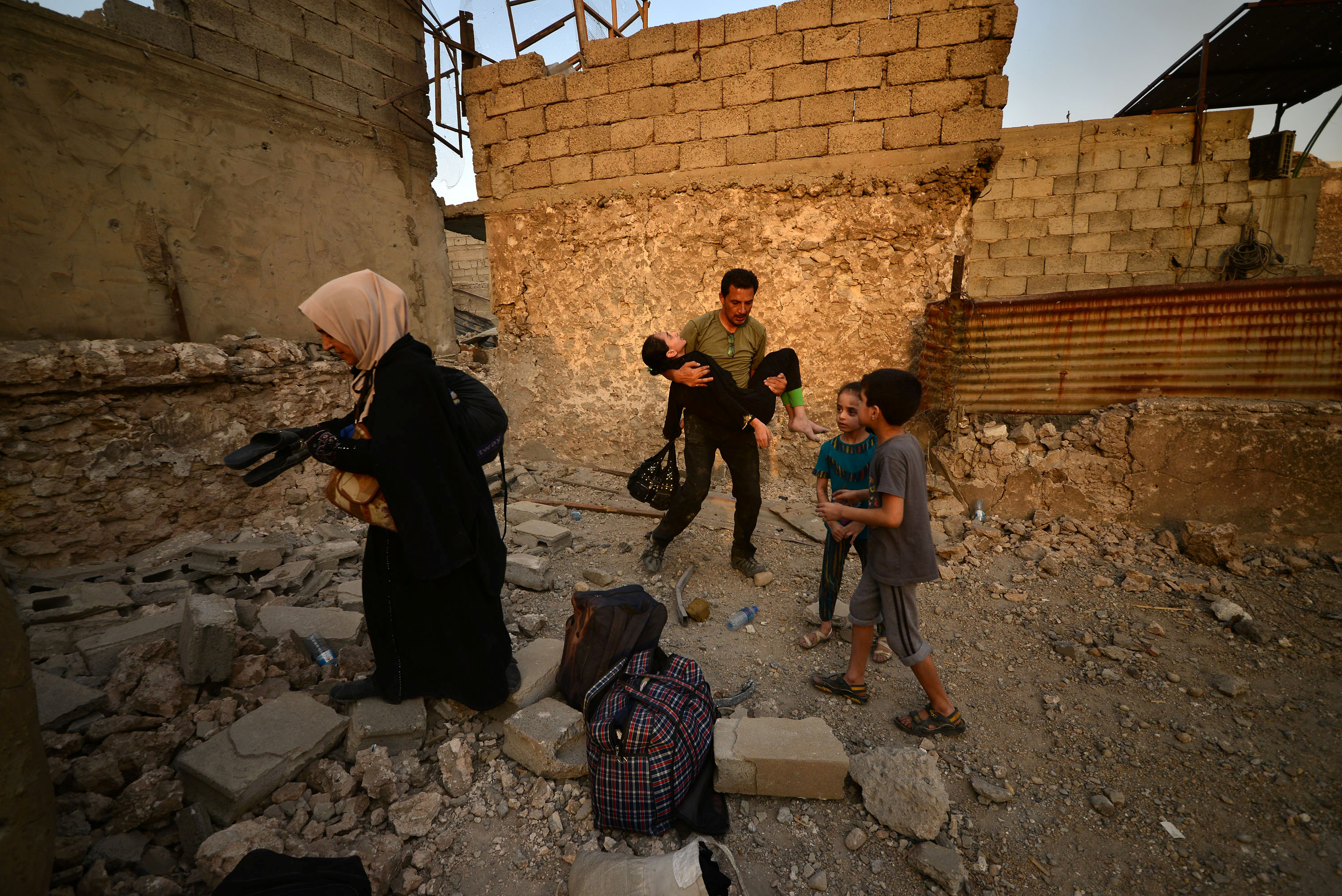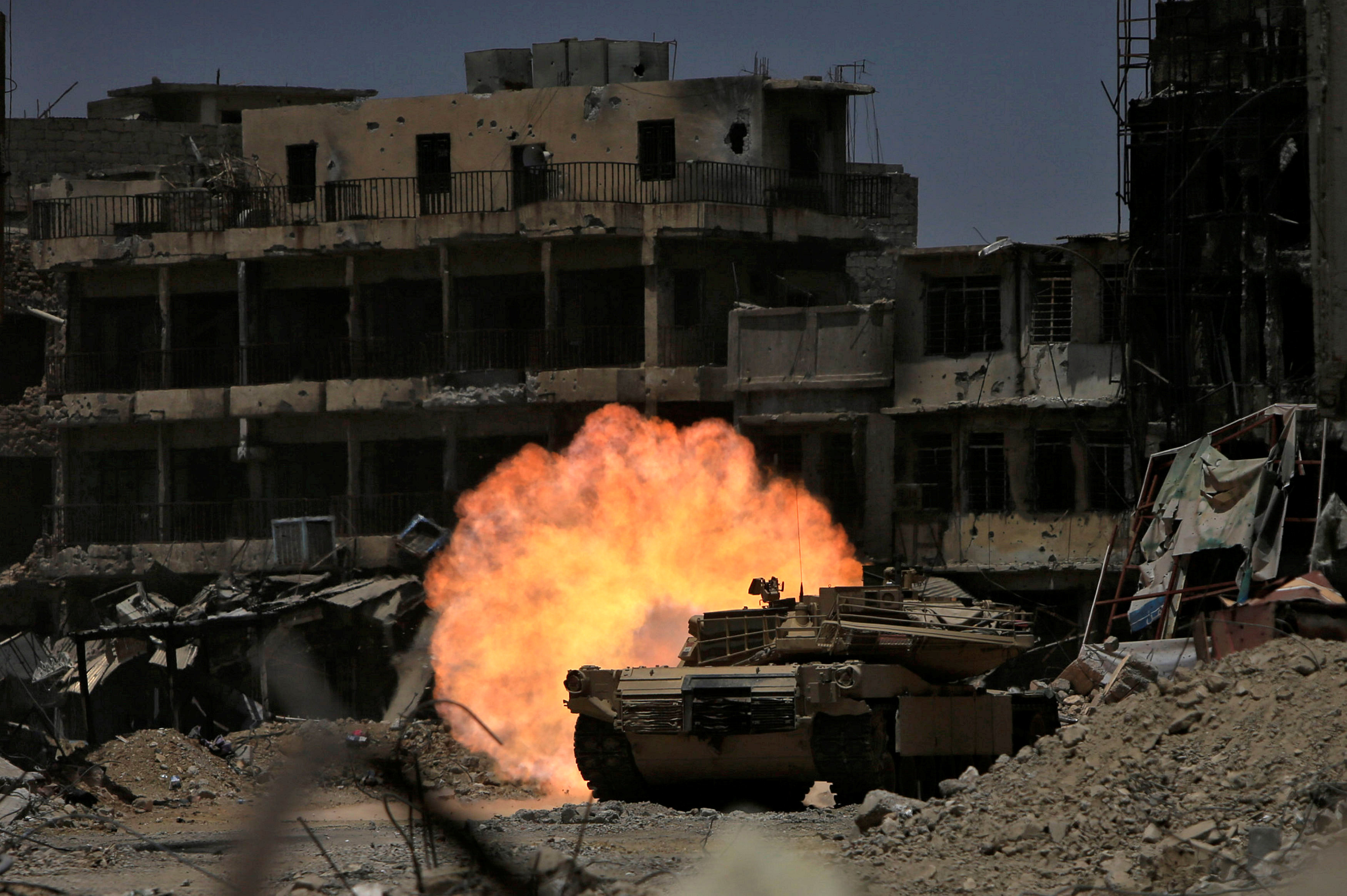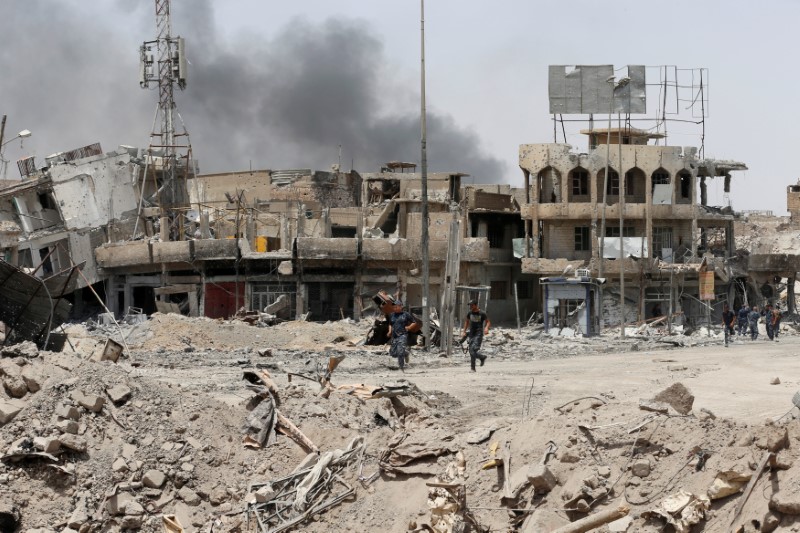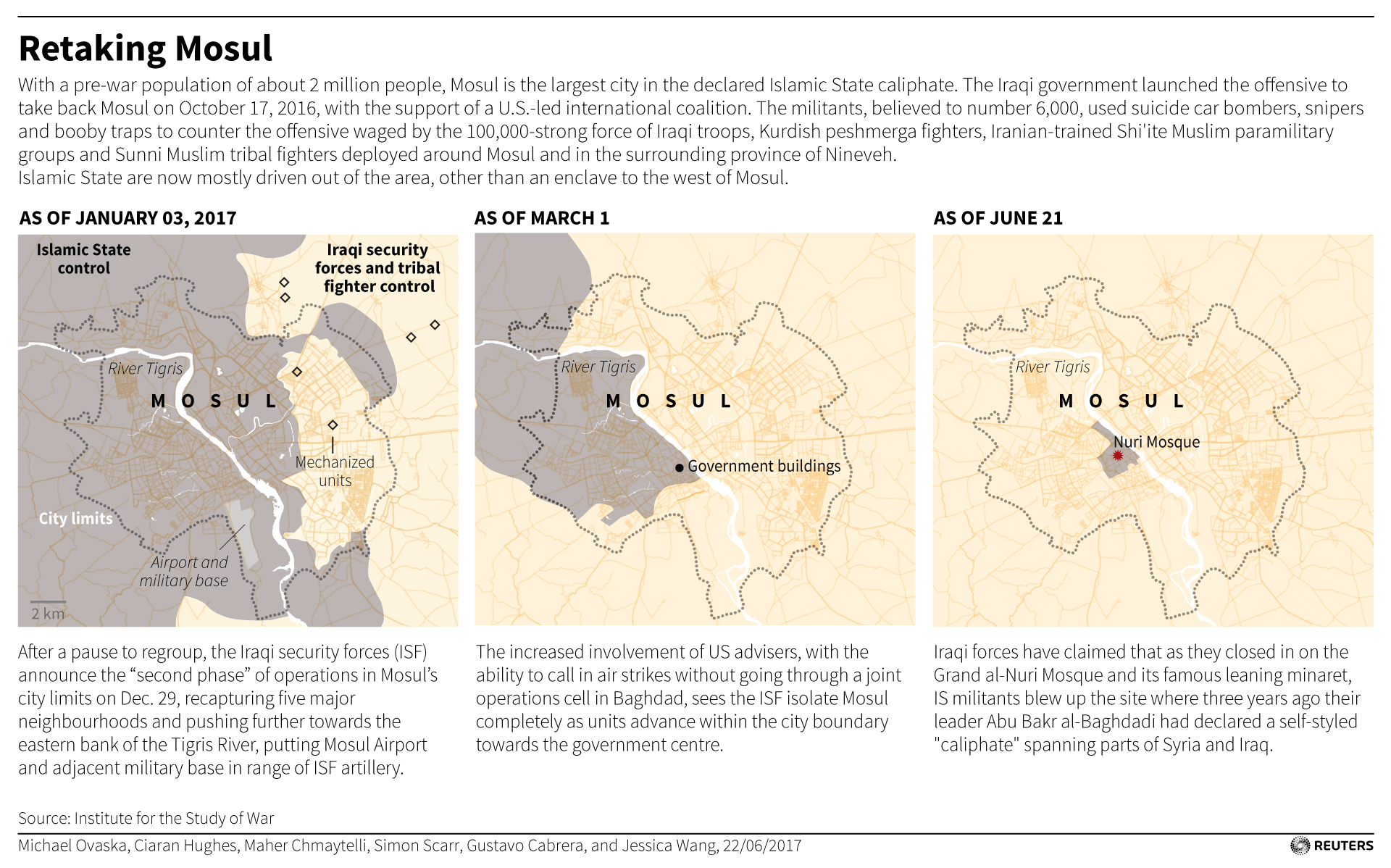
MOSUL, Iraq (Reuters) – Islamic State fighters holding out in Mosul on a strip of land along the Tigris River are increasingly using suicide bombers in a desperate attempt to slow the steady advance of Iraqi forces, military commanders said on Thursday.
Iraqi forces pushing toward the al-Maydan and al-Shareen districts in the northern Iraqi city broke the militants’ defenses and have reached within 200 meters (yards) of the riverbank.
But they encountered stiff resistance from a few hundred militants lodged among thousands of civilians in the Old City’s maze of alleyways, particularly from foreign suicide bombers, Iraqi commanders said.
The military has predicted final victory this week after a grinding eight-month assault to oust Islamic State from the once two-million-strong city.
Mosul is by far the largest city ruled by Islamic State. It was here, three years ago, that the group declared the founding of its “caliphate” over parts of Iraq and neighboring Syria.
Lieutenant General Sami Aridhi of the elite counter-terrorism service said Islamic State fighters were increasingly detonating explosives among civilians fleeing toward security forces and had even resorted to using women suicide bombers.
“They have begun to wait for the troops to reach them and then blow themselves up. They can’t do any more than that,” he told state television.
“They surge forward just to obstruct the troops, not to hold land or retain any other positions because God willing their end is clear to everyone and they are convinced that this is their end,” he said.
Once Mosul has gone, Islamic State’s territory in Iraq will be limited to areas west and south of the city where some tens of thousands of civilians live, and it is expected to keep up asymmetric attacks across the country.
Air strikes continued to rain down just beyond the frontline, and wounded soldiers, some displaying blast wounds, were evacuated.
Civilians interviewed on state TV said they had fled al-Maydan district, which is one of a handful of districts along the riverbank still in Islamic State hands.
Prime Minister Haider Abadi declared the end of Islamic State’s “state of falsehood” a week ago, after security forces took Mosul’s medieval Grand al-Nuri mosque.
Months of grinding urban warfare have displaced 900,000 people, about half the city’s pre-war population, and killed thousands, according to aid organizations.
The United Nations predicts it will cost more than $1 billion to repair basic infrastructure in Mosul, while Iraq’s Kurdish leader said on Thursday in a Reuters interview that the Baghdad government had failed to prepare a post-battle political, security and governance plan.
(Reporting By Stephen Kalin; Editing by Richard Balmforth)

















